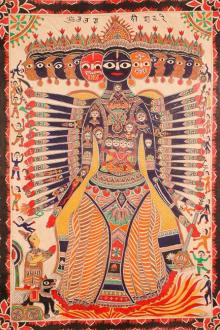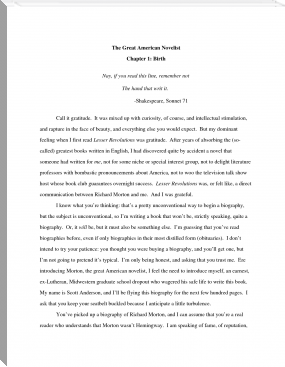The Yellow Claw, Sax Rohmer [top 100 novels of all time .TXT] 📗

- Author: Sax Rohmer
Book online «The Yellow Claw, Sax Rohmer [top 100 novels of all time .TXT] 📗». Author Sax Rohmer
Olaf van Noord rose to meet Helen Cumberly and Denise Ryland, advancing across the floor with the measured gait of a tragic actor. He greeted them aloofly, and a little negro boy proffered tiny cups of China tea. Denise Ryland distended her nostrils as her gaze swept the picture-covered walls; but she seemed to approve of the tea.
The artist next extended to them an ivory box containing little yellow-wrapped cigarettes. Helen Cumberly smilingly refused, but Denise Ryland took one of the cigarettes, sniffed at it superciliously—and then replaced it in the box.
“It has a most... egregiously horrible... odor,” she commented.
“They are a special brand,” explained Olaf van Noord, distractedly, “which I have imported for me from Smyrna. They contain a small percentage of opium.”
“Opium!” exclaimed Denise Ryland, glaring at the speaker and then at Helen Cumberly, as though the latter were responsible in some way for the vices of the painter.
“Yes,” he said, reclosing the box, and pacing somberly to the door to greet a new arrival.
“Did you ever in all your life,” said Denise Ryland, glancing about her, “see such an exhibition... of nightmares?”
Certainly, the criticism was not without justification; the dauby-looking oil-paintings, incomprehensible water-colors, and riotous charcoal sketches which formed the mural decoration of the studio were distinctly “advanced.” But, since the center of interest seemed to be the large canvas on the easel, the two moved to the edges of the group of spectators and began to examine this masterpiece. A very puzzled newspaperman joined them, bending and whispering to Helen Cumberly:
“Are you going to notice the thing seriously? Personally, I am writing it up as a practical joke! We are giving him half a column—Lord knows what for!—but I can't see how to handle it except as funny stuff.”
“But, for heaven's sake... what does he... CALL it?” muttered Denise Ryland, holding a pair of gold rimmed pince-nez before her eyes, and shifting them to and fro in an endeavor to focus the canvas.
“'Our Lady of the Poppies,'” replied the journalist. “Do you think it's intended to mean anything in particular?”
The question was no light one; it embodied a problem not readily solved. The scene depicted, and depicted with a skill, with a technical mastery of the bizarre that had in it something horrible—was a long narrow room—or, properly, cavern. The walls apparently were hewn from black rock, and at regular intervals, placed some three feet from these gleaming walls, uprose slender golden pillars supporting a kind of fretwork arch which entirely masked the ceiling. The point of sight adopted by the painter was peculiar. One apparently looked down into this apartment from some spot elevated fourteen feet or more above the floor level. The floor, which was black and polished, was strewn with tiger skins; and little, inlaid tables and garishly colored cushions were spread about in confusion, whilst cushioned divans occupied the visible corners of the place. The lighting was very “advanced”: a lamp, having a kaleidoscopic shade, swung from the center of the roof low into the room and furnished all the illumination.
Three doors were visible; one, directly in line at the further end of the place, apparently of carved ebony inlaid with ivory; another, on the right, of lemon wood or something allied to it, and inlaid with a design in some emerald hued material; with a third, corresponding door, on the left, just barely visible to the spectator.
Two figures appeared. One was that of a Chinaman in a green robe scarcely distinguishable from the cushions surrounding him, who crouched upon the divan to the left of the central door, smoking a long bamboo pipe. His face was the leering face of a yellow satyr. But, dominating the composition, and so conceived in form, in color, and in lighting, as to claim the attention centrally, so that the other extravagant details became but a setting for it, was another figure.
Upon a slender ivory pedestal crouched a golden dragon, and before the pedestal was placed a huge Chinese vase of the indeterminate pink seen in the heart of a rose, and so skilfully colored as to suggest an internal luminousness. The vase was loaded with a mass of exotic poppies, a riotous splash of color; whilst beside this vase, and slightly in front of the pedestal, stood the figure presumably intended to represent the Lady of the Poppies who gave title to the picture.
The figure was that of an Eastern girl, slight and supple, and possessing a devilish and forbidding grace. Her short hair formed a black smudge upon the canvas, and cast a dense shadow upon her face. The composition was infinitely daring; for out of this shadow shone the great black eyes, their diablerie most cunningly insinuated; whilst with a brilliant exclusion of detail—by means of two strokes of the brush steeped in brightest vermilion, and one seemingly haphazard splash of dead white—an evil and abandoned smile was made to greet the spectator.
To the waist, the figure was a study in satin nudity, whence, from a jeweled girdle, light draperies swept downward, covering the feet and swinging, a shimmering curve out into the foreground of the canvas, the curve being cut off in its apogee by the gold frame.
Above her head, this girl of demoniacal beauty held a bunch of poppies seemingly torn from the vase: this, with her left hand; with her right she pointed, tauntingly, at her beholder.
In comparison with the effected futurism of the other pictures in the studio, “Our Lady of the Poppies,” beyond question was a great painting. From a point where the entire composition might be taken in by the eye, the uncanny scene glowed with highly colored detail; but, exclude the scheme of the composition, and focus the eye upon any one item—the golden dragon—the seated Chinaman—the ebony door—the silk-shaded lamp; it had no detail whatever: one beheld a meaningless mass of colors. Individually, no one section of the canvas had life, had meaning; but, as a whole, it glowed, it lived—it was genius. Above all, it was uncanny.
This, Denise Ryland fully realized, but critics had grown so used to treating the work of Olaf van Noord as a joke, that “Our Lady of the Poppies” in all probability would never be judged seriously.
“What does it mean, Mr. van Noord?” asked Helen Cumberly, leaving the group of worshipers standing hushed in rapture before the canvas and approaching the painter. “Is there some occult significance in the title?”
“It is a priestess,” replied the artist, in his dreamy fashion....
“A priestess?”
“A priestess of the temple.”...
Helen Cumberly glanced again at the astonishing picture.
“Do you mean,” she began, “that there is a living original?”
Olaf van Noord bowed absently, and left her side to greet one who at that moment entered the studio. Something magnetic in the personality of the newcomer drew all eyes from the canvas to the figure on the threshold. The artist was removing garish tiger skin furs from the shoulders of the girl—for the new arrival was a girl, a Eurasian girl.
She wore a tiger skin motor-coat, and a little, close-fitting, turban-like cap of the same. The coat removed, she stood revealed in a clinging





Comments (0)